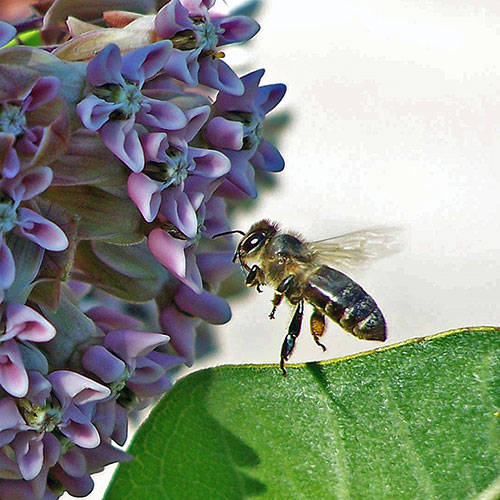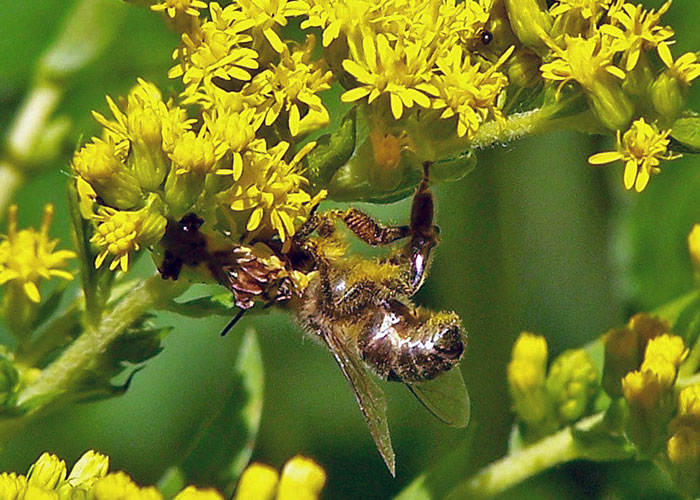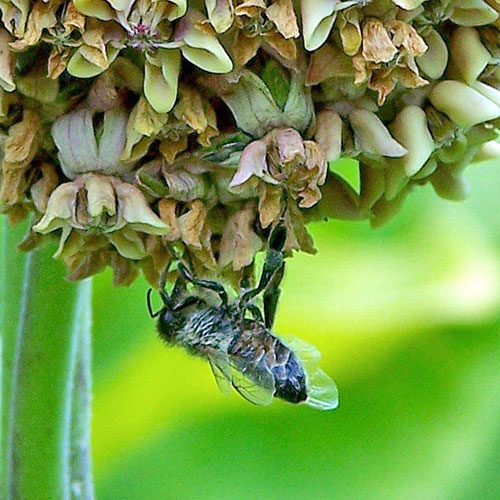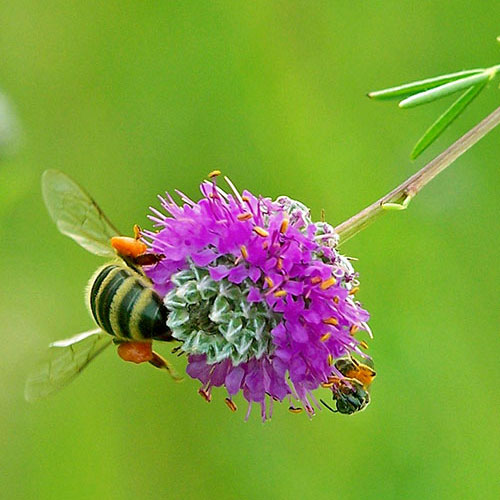Hi BugFans,
Honeybees, famously, live in social groups with strictly defined roles. The workers, all female, have stingers that are vestigial ovipositers (egg-depositers, to you classical language scholars). Some workers forage for food, some guard the hive, some are nursery workers and others care for the queen. The queens are the mothers of the hive, and the drones (males) are boy-toys.
In the nursery, larval queens in are fed “royal jelly”, while the larval worker bees are fed “bee bread” (a honey and pollen mix). When the old queen leaves the hive in early summer, accompanied by a group of workers called a swarm—and these can be pretty dramatic—the first larval queen that emerges from her cell kills the other queens in their cells or fights them as they emerge.
Goldenrods and milkweeds are very popular with a huge variety of insects, including predators. If you squint, you can see the ambush bug to the left of the dead bee. Ambush bugs grab their prey firmly and inject a meat tenderizer. They wait until the prey’s innards have “liquefied” (like the old SNL “Bassomatic” commercial) and then suck out the juices.
Milkweeds actually have a tricky pollen set-up. A bee has to reach into the flower to retrieve the saddle-bag-shaped pollenia. Sometimes when they grab for the pollenia, they can’t turn it properly to pull it out, and their feet get stuck and they die.
Honeybees may store pollen in pollen sacs on their legs as they forage. Studies prove that bees show an amazing “flower constancy”—when bees are actively foraging, more than 95% of the pollen in their pollen sacs comes from the same kind of flower!
The Native Americans called honeybees, which were imported by European settlers, “white man’s flies”.
The BugLady




